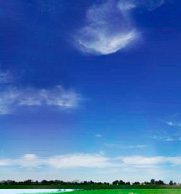https://www.nature.com/articles/d41586-024-00471-4
Rampant planting of flammable non-native species has helped to fuel deadly blazes - even in places known for cool, damp weather.
In Chile, more than 130 people have died in this year's wildfires - the deadliest in the nation's history. In Colombia last month, wildfire smoke billowed just outside Bogotá, defying the city's reputation for cold, wet weather. And in Argentina, a wildfire ravaged a forest that is listed as a World Heritage Site by the United Nations cultural organization UNESCO.
These wildfires add to the destruction from record-setting fires in the Amazon in October 2023. This is not a normal pattern: in many parts of the region, wildfires are not part of the landscape's natural history, except for blazes caused by "occasional lightning strikes", says Francisco de la Barrera, an environmental scientist at University of Concepción in Chile.
But scientists say that the flames have been fanned by a combination of a strong El Niño climate pattern, a profusion of non-native trees and climate change. Researchers warn that the same factors could put other cities on the continent at risk.
"We are very worried, because each new fire is bigger, more threatening and with an ever-greater impact," says de la Barrera.
Climate change's fiery legacy
Catastrophic fires have multiple causes, but climate change is one of the key drivers, says climatologist Maisa Rojas Corradi, who is Chile's environment minister. In the past decade, the country has had 16 megafires, which coincided with "the highest temperatures recorded for central Chile", Rojas says. A megadrought that descended on the region in 2010 is one of the longest in a millennium, says Wenju Cai, a climatologist at Australia's national science agency, CSIRO, in Melbourne.
Climate change is also cutting cloud cover and shrinking glaciers in the Chilean Andes, says Cai. That means a decrease in reflected sunlight and, as a result, increasing temperatures.
This year, the effects of climate change have been amplified by a strong El Niño climatic pattern, Cai says. Warm sea-surface temperatures off Chile's coast have intensified inland temperatures and fuelled "warm easterly winds blowing across the Andes from Argentina toward Chile, fanning the fire," he says.
Where forest and city meet
Humans have also provided ample fuel for local wildfires with well-intentioned tree planting. In the twentieth century, eucalyptus trees native to Australia were planted on the hills surrounding Bogotá, to stop heavy erosion, says Dolors Armenteras, a biologist at the National University of Colombia in Bogotá. Eucalyptus was chosen because it grows quickly and adapts well to a variety of conditions.
The planting had a "noble goal", says Trent Penman, a bushfire scientist at the University of Melbourne in Australia, but large numbers of eucalyptus trees provide a bounty of flammable material in the form of bark sheddings. These ignite readily, producing numerous embers that can blow across roads, rivers and other fuel breaks, quickly spreading fire.
De la Barrera says that non-native trees played a part in the fires in Chile. According to the country's agriculture department, forest plantation areas in the Valparaiso region - the scene of January's deadly fires - doubled in size to more than 41,000 hectares between 2006 and 2021. Eucalyptus accounts for almost 40% of the area covered by plantations in Chile.
"In the last 20 to 30 years, the cities [have moved] much closer to plantations," de la Barrera says, adding that populations on the rural-urban fringe of cities are at greater risk of fire in the future.
A fire foretold
"When I saw the fires in Bogotá, it was like seeing a Chronicle of a Death Foretold," says Tania Marisol González, a conservation ecologist at Bogotá's Pontifical Javeriana University. She's referring to a novel by Colombian Nobel prizewinner Gabriel García Márquez in which no one in a small town can stop a murder, despite many opportunities to do so - a parallel to the inability to stop wildfires.
Latin America needs to take more preventive action, González says, including reducing fuel loads and building firebreaks. Armenteras says that fire risk could be reduced on the edges of Latin American cities by replacing invasive trees in these transitional zones with native species that are less susceptible to fire. But more research is needed before such a programme could begin."We do not know enough about the flammability of the species in Latin America; we do not know which species can be used," she says.
Rojas, the Chilean environment minister, says that the government's job is to make the country more resilient to fires. One possibility, she says, is to promote "biodiverse landscapes, with protected water sources and firebreak areas, especially in the urban-rural interface. This will reduce the risks to people and nature."
But a long road lies ahead: de la Barrera warns that the steps proposed by Rojas will require substantial legal and regulatory changes.




 Română
Română English
English


